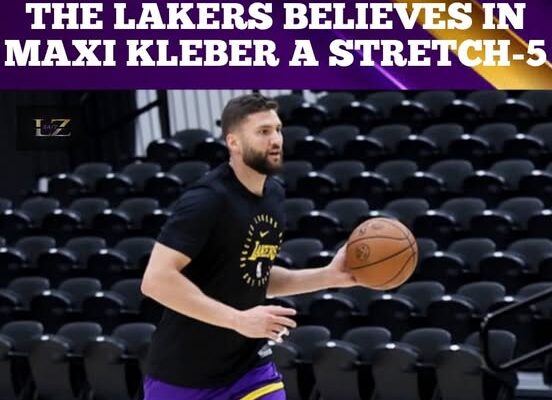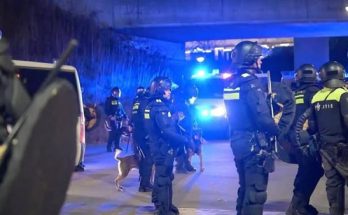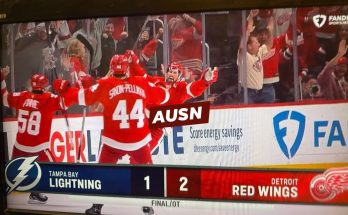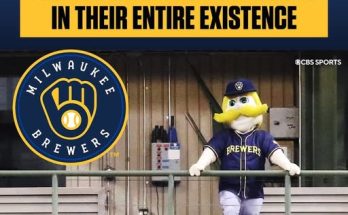The Los Angeles Lakers trading for Maxi Kleber alongside Luka Dončić in early February gave the team more than just superstar power—it added a veteran, floor‑spacing big man who could offer something the Lakers were sorely lacking: shooting from the center position. Dan Woike of *The Athletic* summed it up succinctly: “The Lakers… believe in Maxi Kleber’s value as a stretch big. He’s recovering well from foot surgery last Jan. and could give them another dimension in their C rotation.” That belief isn’t just fluffy optimism—the Lakers understand the shifting demands of today’s NBA, where spacing and positional versatility are the currency of playoff success.
If you rewind to his days in Dallas, Kleber was far more than a bench piece. Over eight seasons with the Mavericks, he averaged 6.4 points, 4.4 rebounds, and 1.2 assists in about 22 minutes a night, all while shooting a respectable 35–37% from beyond the arc . In playoff moments, he elevated his game—his career playoff 3‑point percentage sits at 38.6% across 45 games , and his defensive presence was reliable enough to earn praise: he could switch, protect the rim weak‑side, and anchor a small‑ball lineup with physicality and IQ.
The timing of his LA arrival came with a caveat: a January right‑foot surgery, following a fracture suffered while on the Mavericks ([opencourt-basketball.com][3]). He required surgical repair to his fifth metatarsal on Jan. 30, and by mid-April had progressed to on‑court activities, including running and shooting drills with the full team JJ Redick, channels medical updates via Jovan Buha, confirmed he’d begun group court participation but cautioned that there was still no set timetable for a game return. The Lakers weren’t in a rush—this would be a careful integration, potentially more valuable in next season’s rotation.
And let’s set realistic expectations: Kleber’s usage won’t be heavy or nightly. But if he regains 80–85% of his prior form, his unique combination of spacing, size, and switchable defense becomes a rotation asset. Reddit thread users who follow Lakers insider chatter are divided, but many agree that a healthy Kleber can slot in as a 10‑15 minute backup at the 4 or 5, particularly in small‑ball sets . One user commented that the coaching staff would likely see him as a veteran who “knows how to play 4 on 3 short roll,” “a smart defender who has done a lot of switching,” and “it’s not like he has any kind of ball handling role” ). Another noted, “If he’s healthy he is definitely a good stretch 5 playing hustle defense… next to Vando as a stretch 5 off the bench”.
On the flip side, there are doubts anchored in his injury history and periods of inconsistency. Some fans point out that post-shoulder injuries, his confidence to shoot dipped sharply, and his 3‑point attempts declined . One Redditor called him a “Mavs refugee” whose shooting fell to around 26% in recent campaigns, questioning whether the Lakers got a legitimate stretch‑5 or a salary‑dump placeholder. But that voice is in the minority—most optimistic takes acknowledge his shooting and defensive pedigree, while calling his ceiling dependent on health and regained confidence.
This tension—between upside and uncertainty—is the crux of why the Lakers “believe” in him. They could add another veteran stretch big like Al Horford, but Kleber’s presence presents a cost-effective, familiar-skill alternative; it also gives them trade flexibility (an expiring contract and rotation-ready veteran). Dan Woike notes exactly that juxtaposition with Horford rumors circulating: if they land Horford, Kleber becomes suddenly expendable—perhaps the kind of move that could yield future assets.
Moreover, Kleber’s synergy with Luka Dončić, albeit untested, is logical. He spent his Dallas years in Luka-led lineups. Whatever chemistry he built running 5‑out spacing sets, short rolls, and catching-and-shooting, he brings that understanding to LA. The Athletic quotes highlight: “the ability to roll out different looks depending on the situation is crucial to success. Having Kleber to bring out when some more shooting is needed is a nice weapon to have.”That’s more than repeating words—it underlines that the Lakers don’t see Kleber as filler. They see a piece that fits an evolving direction.
As of late June or early July, we’re just over four months removed from his surgery. The best recovery model suggests that players, especially bigs, often take 4–6 months to return to baseline following metatarsal fractures. Kleber’s consistent court work through April, including shooting drills (the Kamenetzky Brothers noted he sank nine consecutive shots in one session), is a strong signal. But the chart to returning to contested play, contact, and live game rhythm is long. Every Lakers injury update—from *SI*, *Silver Screen & Roll*, and *BasketNews*—echoed the same notion: good progress, but no firm dates ([silverscreenandroll.com][8]). That measured tone underpins the Lakers’ patient planning.
If he returns late this season or early next, what might he offer? Context: Lakers already have Jaxson Hayes (a more traditional center), Jarred Vanderbilt (defensive wing-forward), Rui Hachimura (versatile forward), Dorian Finney‑Smith (defensive wing), and Austin Reaves (offensive guard). What matters is depth, spacing, and matchups. In playoff basketball, being able to switch, space, and hit threes—even 30–35% from a big—is game-changing. Late in rotations, where bench performance can flip momentum, Kleber’s profile could spark the Lakers’ second unit. His career playoff averages—6.4 points, 3.9 rebounds, 1.2 assists—are modest, but remember he only averaged 22 minutes; scaled to 30 minutes, those are rotation‑level numbers .
His Denver vs. Minnesota playoff series debut in April 30 Game 5 (five minutes, two points) was tiny but symbolic: the Lakers are even healthier, deeper, and planning for next season with scenarios involving Kleber in their frontcourt rotation . Dan Woike’s quote frames it best—not flashy speculation, but belief backed by context: recovery, skillset alignment with team needs, and no signing of another stretch big yet. They see a role: “another dimension in their C rotation”.
In summation: The Lakers’ confidence in Kleber isn’t blustery or overblown. It’s rooted in what he’s done, what he can do, and the operational gap he fills. He’s not replacing a star. He’s not a headline. He’s not even a nightly contributor (at least not yet). But in a league that prizes shooting and versatility, his value as a stretch‑5—if he recovers his shot and stays healthy—could be a quietly powerful component of an already dynamic roster. The Lakers are hedging a low‑risk bet on a veteran fit, that if it pays off, gives their big man rotation a dimension most others don’t have. That’s smart roster building.
It all comes down to process. Healing foot, rehab, shooting drills, incremental practice, and cautious integration. If every placeholder box is checked, Kleber becomes an asset. If not, he’s still a tradeable veteran. That’s why the team and Dan Woike are speaking highly of his value now: they’re seeing the pieces align—and in today’s NBA, that is what makes maximally effective stretch‑5 players rare and prized.



